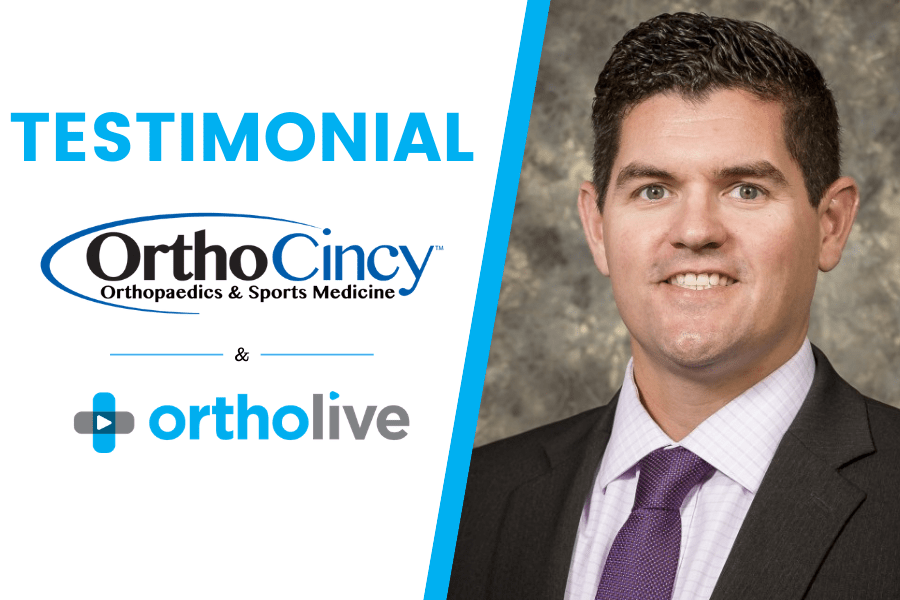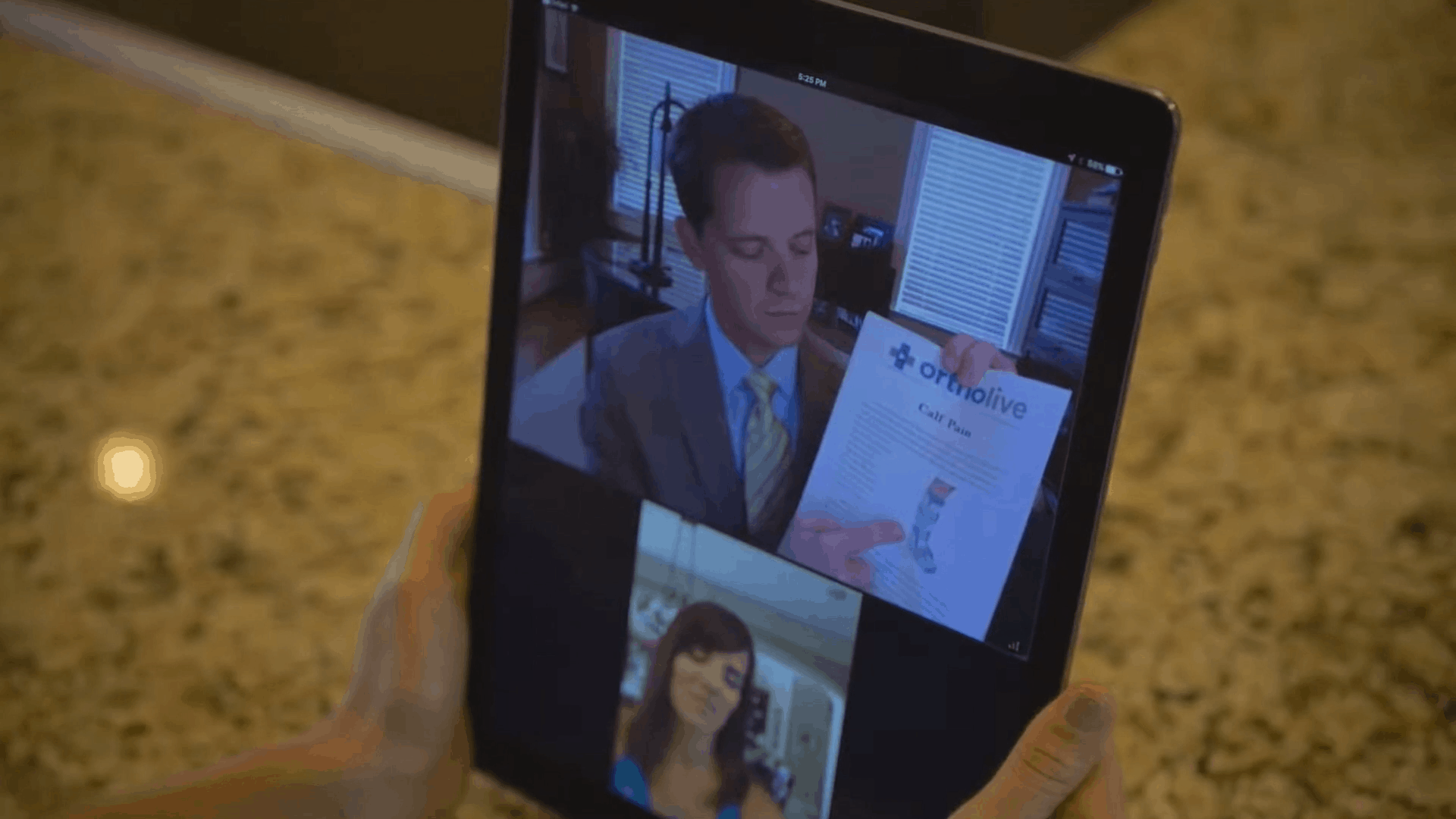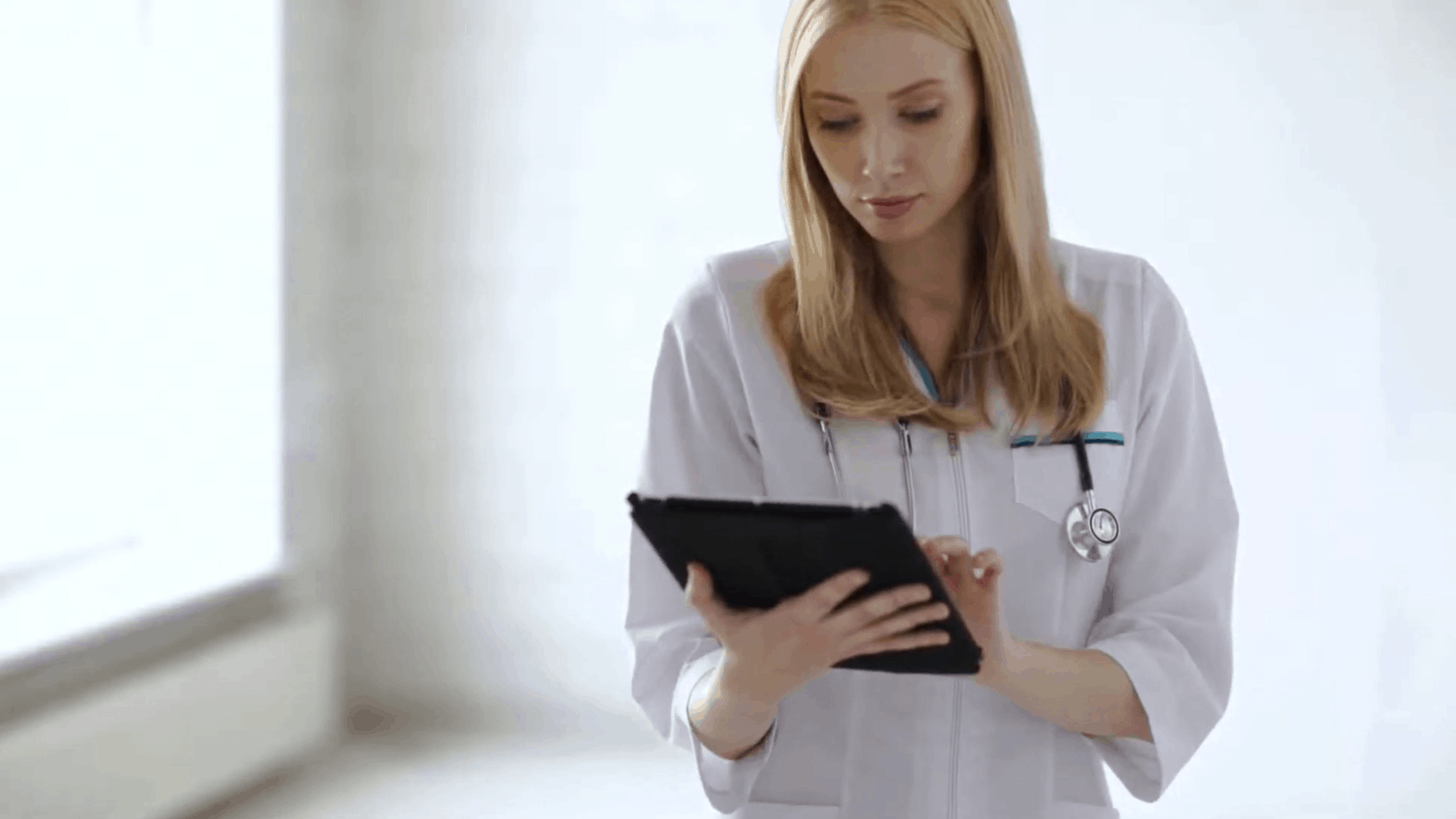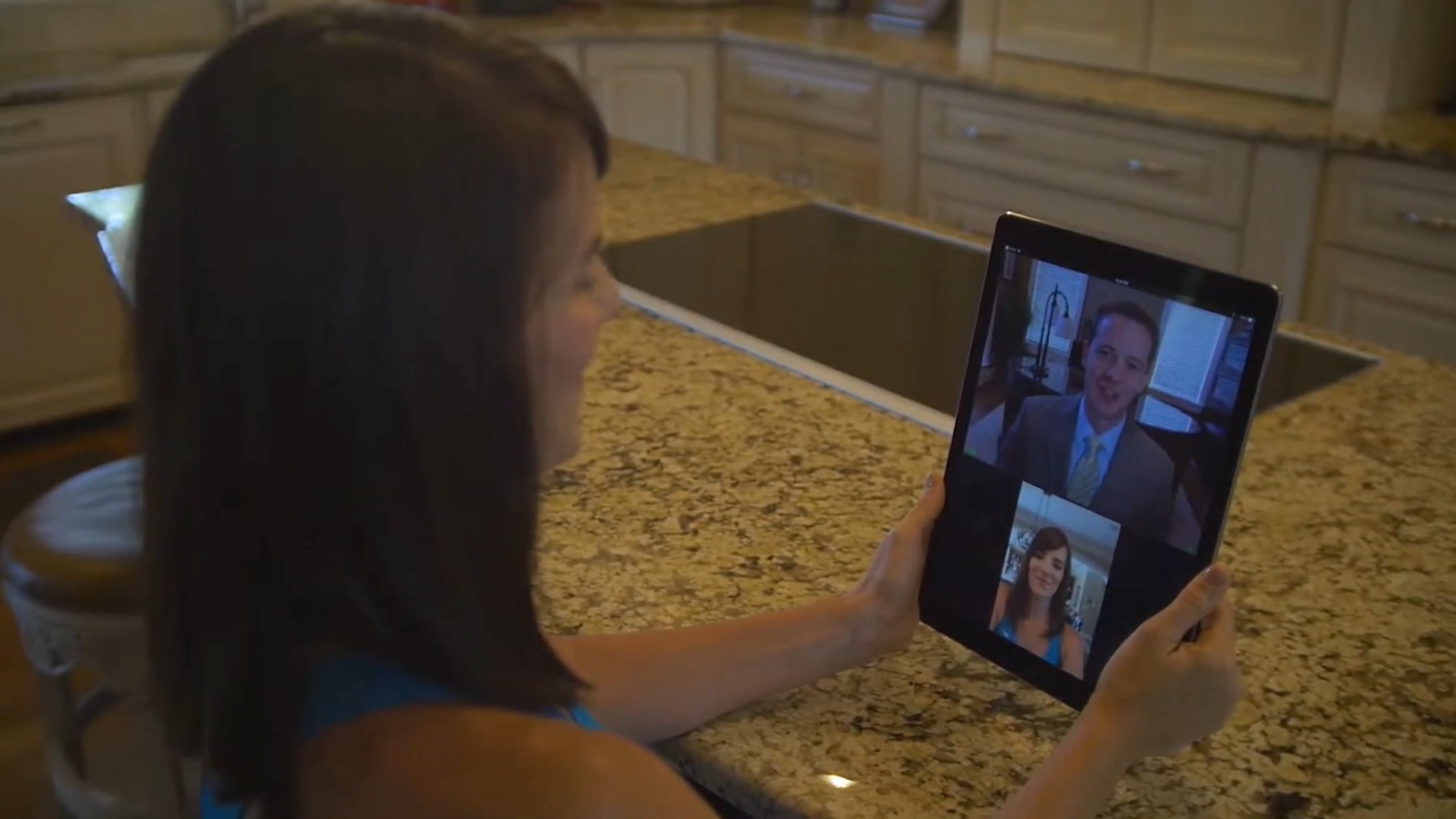
- What’s the biggest benefit of orthopedic telemedicine?
- What telemedicine features do orthopedic physicians appreciate the most?
- What does telemedicine usage look like today?
- What’s the importance of having a telemedicine platform made especially for orthopedic practices?
Adam V. Metzler, M.D., a board-certified orthopedic surgeon at OrthoCincy Orthopaedics and Sports Medicine has used OrthoLive, an orthopedic telemedicine platform, to see hundreds of patients during the coronavirus pandemic.
“I’ve been in practice eight years. We adopted OrthoLive over the pandemic and it’s been a great addition to our practice,” he says. “We’re a large group of over 30-physicians and have had great success with it.”
OrthoCincy had access to the OrthoLive application before the pandemic hit. The tool hadn’t been used much, but the pandemic changed the equation, like it did for so many other medical practices. Telemedicine is now wildly popular; CNBC says more than one billion visits will likely occur in the U.S. this year alone.
As many specialty practices faltered when elective procedures were postponed this spring, OrthoCincy had great success during the height of the pandemic using telemedicine. Dr. Metzler says OrthoLive helped OrthoCincy.
“It increased our revenue, productivity, and most importantly allowed for patient access. We’re excited about our continued utilization, and excited about the benefits of OrthoLive.”
What’s the Biggest Benefit of Orthopedic Telemedicine?
Dr. Metzler and his team at OrthoCincy experienced the first hand benefits of using an orthopedic-specific telemedicine application for his practice. He said it was the flexibility the tool allowed that was so beneficial to his patients and the practice.
“During the height of the scare where we couldn’t go out and things were shut down, it allowed access for everybody as most people do have a smart device,” says Dr. Metzler.
As offices gradually reopened, the benefits shifted slightly toward improving convenience for patients seeking medical care. Dr. Metzler says, “It allows you to reach people at different times.”
OrthoCincy uses telemedicine to work with patients when they’re at work to review MRI test results. Patients love the convenience of not having to take time off to travel to an office, find parking, and wait in a waiting room, which could take hours. Instead, an MRI check can be done on the patient’s cell phone and they can go right back to work. OrthoCincy can even do a post-operative check while the patient is in physical therapy, making it very convenient for everyone involved.
Dr. Metzler also says, “We probably wouldn’t have thought too much about this before the pandemic but now it’s implemented in our practice as routine.
According to Dr. Metzler, one of the benefits of the OrthoLive platform is that it’s easy to utilize and integrate into your current practice management and EMR workflows. He says:
“I think OrthoLive is probably the best platform out there right now on the market and has excellent customer support. So, we’ve been very pleasantly surprised and happy with our product with them and look forward to a continued relationship with them.”
Dr. Metzler and his team at OrthoCincy experienced the first hand benefits of using an orthopedic-specific telemedicine application for his practice. He said it was the flexibility the tool allowed that was so beneficial to his patients and the practice.
“During the height of the scare where we couldn’t go out and things were shut down, it allowed access for everybody as most people do have a smart device,” says Dr. Metzler.
As offices gradually reopened, the benefits shifted slightly toward improving convenience for patients seeking medical care. Dr. Metzler says, “It allows you to reach people at different times.”
OrthoCincy uses telemedicine to work with patients when they’re at work to review MRI test results. Patients love the convenience of not having to take time off to travel to an office, find parking, and wait in a waiting room, which could take hours. Instead, an MRI check can be done on the patient’s cell phone and they can go right back to work. OrthoCincy can even do a post-operative check while the patient is in physical therapy, making it very convenient for everyone involved.
Dr. Metzler also says, “We probably wouldn’t have thought too much about this before the pandemic but now it’s implemented in our practice as routine.
According to Dr. Metzler, one of the benefits of the OrthoLive platform is that it’s easy to utilize and integrate into your current practice management and EMR workflows. He says:
“I think OrthoLive is probably the best platform out there right now on the market and has excellent customer support. So, we’ve been very pleasantly surprised and happy with our product with them and look forward to a continued relationship with them.”

What Telemedicine Features Do Orthopedic Physicians Appreciate the Most?
Dr. Metzler immediately answered this question with, “I think for most of us it’s the share screen. For myself, I have lots of little Power Point slides. I can show them their MRI of their ACL tear and then I can go over some video and pictures of how we’re going to reconstruct their ACL without ever having to be physically in front of them.”
The share screen feature is an engaging element that entices the patient into discussing their healthcare with their doctor. Dr. Metzler says that engagement is key and that, “Patients absolutely love it. They feel like they understand the surgeries really easily. They see your cursor and know exactly what you’re looking at on an MRI.” Patients can also zoom and pinch their screens to see exactly that they need to see to understand their condition and treatments. Dr. Metzler says this is one of the, “really cool, easy little features that make the difference between this app and some other apps out there.”

What Does Telemedicine Usage Look Like Today?
Some patients are still reluctant to enter the office setting so Dr. Metzler continues to leverage telemedicine as a way to provide care to patients and drive revenue. Currently, OrthoCincy is using telemedicine:
- For MRI reviews
- Quick post-op follow-ups on knee or shoulder scopes
- Remote work injury patients can be triaged right at the job site
- Work status can be discussed, changed, and charged during a telemedicine visit
- To increase access for patients who travel to the practice from remote areas
Dr. Metzler points out that telemedicine will certainly generate revenue and improve efficiency, if used correctly.
“Sometimes there’s some logistical challenges with new patients; you can’t make direct contact physically, so it’s a little harder,” he says. “But there’s still opportunities.”

What’s the Importance of Having a Telemedicine Platform Made Especially for Orthopedic Practices?
The OrthoLive orthopedic telemedicine software was conceived and founded by Michael Greiwe, M.D., an orthopedic surgeon. Dr. Metzler points out one of the obvious benefits of having a communications tool used by a surgeon, from an end-user perspective, “I think any time you take a product and have a person that lives and breathes in that field and invents something for that field, they understand the tone, the pitch, everything that needs to happen for that product.”
Since Dr. Greiwe uses OrthoLive every day in his practice, the features, user interface and workflow have all been designed with ease and efficiency in mind from the ground up.
Dr. Metzler says, “Dr. Griewe has a strong passion for the field. When someone invents something and is heavily involved in it, I think you’re going to see the care factor, the understanding factor, is an all-time high. They appreciate the way we think, as orthopedic surgeons and what we’re looking for. So, the design is implemented toward that user. In general, that’s the best reason.”
Orthopedists interested in the OrthoLive telemedicine platform should contact us for a demo and a discussion about how telemedicine could change your practice.



